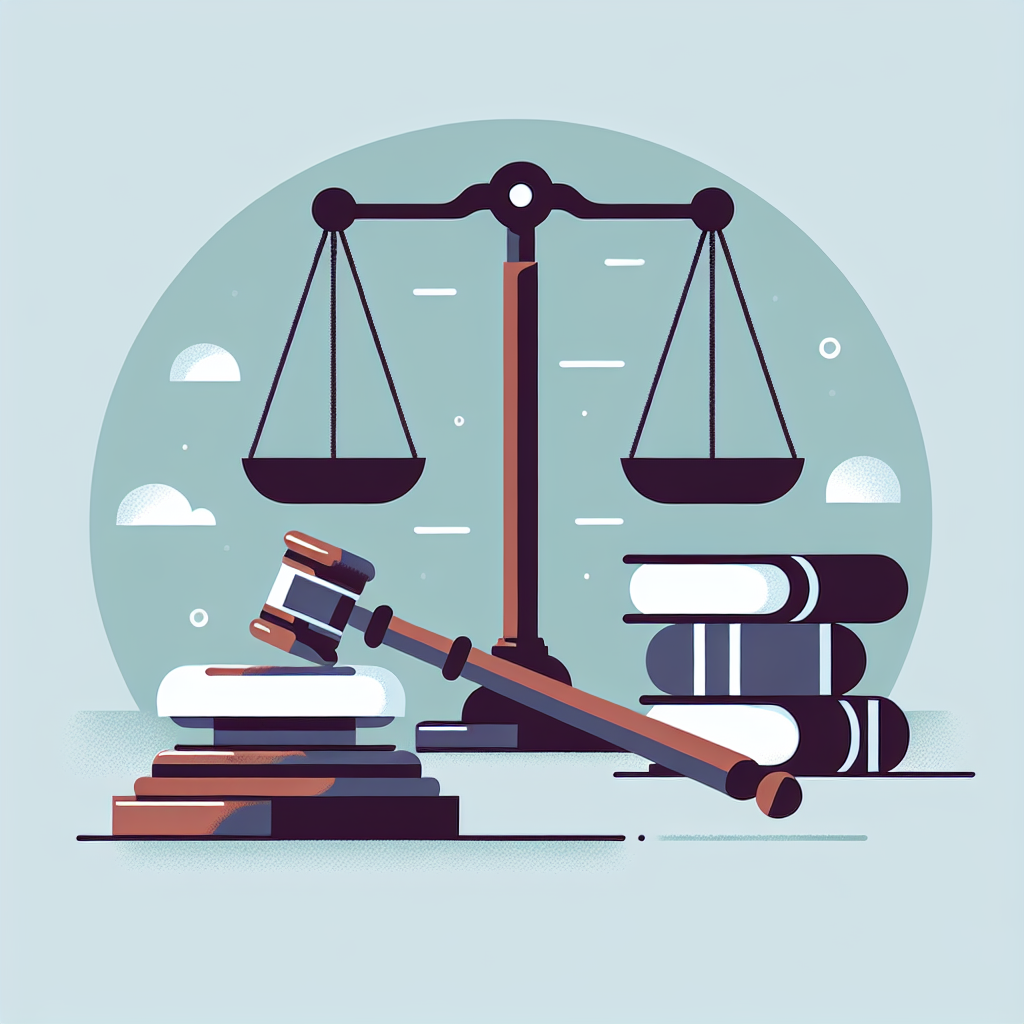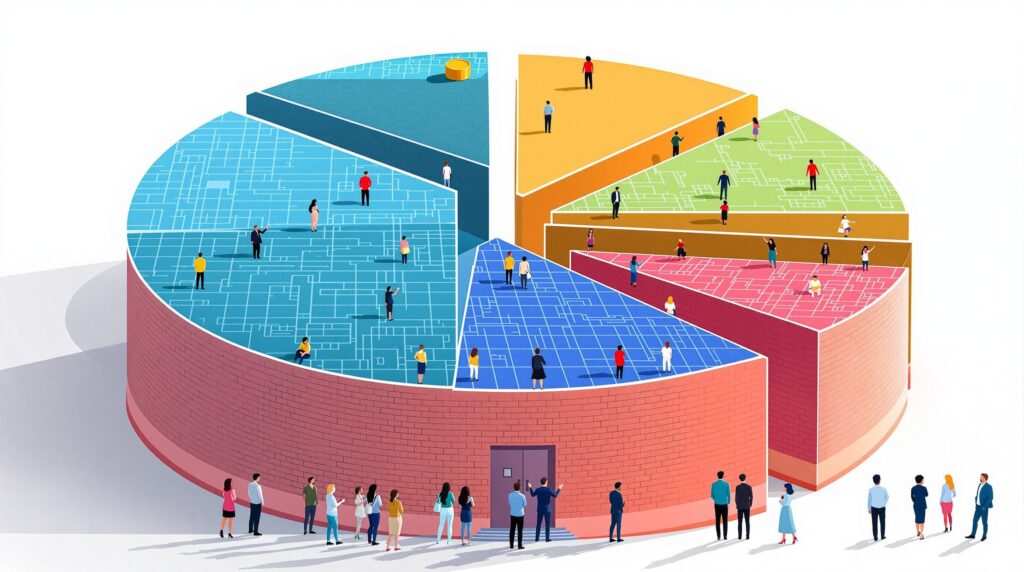[rev_slider alias=”slider-1″][/rev_slider]
Understanding Layer 1 Blockchains: A Comprehensive Overview
Layer 1 blockchains form the foundation of the cryptocurrency universe, providing the infrastructure that supports various decentralized applications and financial transactions. As digital currencies and blockchain technology continue to evolve, understanding these base-level blockchains becomes essential for anyone involved in the tech and financial sectors. Let’s delve into what Layer 1 blockchains are, their critical role in the crypto ecosystem, and why they are pivotal for the development and operation of various blockchain solutions.
Key Features of Layer 1 Blockchains
The term “Layer 1” refers to the underlying main blockchain architecture. Ethereum, Solana, and Avalanche are prominent examples of such blockchains. But what makes them distinct and form the backbone of digital finance?
- Decentralization: At its core, a Layer 1 blockchain operates on a decentralized network, spread across a multitude of nodes, ensuring no single entity has control or influence over the entire network. This decentralization is crucial for the security and trustless nature of blockchain transactions.
- Scalability: Scalability refers to a network’s ability to handle a growing amount of work or its potential to accommodate growth. Layer 1 solutions implement various scaling strategies, such as sharding or layer two solutions (sidechains, rollups), to increase transaction throughput without compromising security.
- Consensus Mechanisms: These are protocols that determine how transactions are verified on the blockchain. Common mechanisms include Proof of Work (PoW) and Proof of Stake (PoS). Each has unique implications for energy consumption, speed, and security.
- Interoperability: With the growing number of blockchain networks, the ability to seamlessly exchange information and value across different blockchain platforms is becoming increasingly important. Layer 1 blockchains are developing standards and protocols that facilitate interoperability.
- Security: A critical aspect of Layer 1 blockchains is their robust security protocols which defend against attacks and ensure the integrity of the transaction data. The decentralized and immutable nature of blockchain makes it inherently resistant to fraud and hacking.
- Tokenomics: Native tokens play a crucial role in operating and governing blockchain networks. They’re used for paying transaction fees, staking, and governance voting, influencing the network’s economy and operations profoundly.
Understanding these key features provides a clear view into how Layer 1 blockchains operate and their significance within wider blockchain ecosystems. Whether it’s managing transactions, enhancing security, or facilitating new applications, these platforms are at the forefront of digital blockchain innovations. As the crypto world evolves, keeping an eye on these fundamental technologies will be critical for anyone engaged in technology and finance sectors.
Ethereum vs. Solana: A Detailed Comparison
Unlock the intriguing distinctions between Ethereum and Solana as we dive deep into their capabilities as Layer 1 blockchain technologies. These platforms represent some of the most advanced blockchain technologies, offering unique benefits and solutions to the world of decentralized applications (dApps) and smart contracts.
Understanding Layer 1 Technology
Before we compare Ethereum and Solana, it’s critical to grasp what a Layer 1 blockchain is. Layer 1 refers to the underlying main architecture of a blockchain network. This includes the basic framework responsible for validating and finalizing transactions. It’s the foundation upon which additional layers (like Layer 2 scaling solutions) and applications are built. Key Layer 1 blockchains such as Ethereum and Solana provide the necessary infrastructure and security, enabling extended functionality through decentralized applications (dApps) and smart contracts.
Transaction Speed and Scalability: Ethereum vs. Solana
Transaction Speed: One of the primary aspects distinguishing Ethereum and Solana is transaction speed. Ethereum, using Proof of Work (PoW), typically processes transactions at 15 transactions per second (TPS). However, with its upcoming transition to Proof of Stake (PoS) under Ethereum 2.0, it aims to greatly increase this number.
On the other hand, Solana boasts a high throughput of approximately 65,000 TPS thanks to its unique consensus mechanism known as Proof of History (PoH) combined with Proof of Stake (PoS). This stark difference in transaction speed makes Solana a favorable option for applications requiring high-speed data processing and transaction completion.
Scalability: Scalability refers to a network’s ability to handle a growing number of transactions without succumbing to network congestion and increased fees. Ethereum currently struggles with scalability, which leads to higher gas fees during peak times. The Ethereum community has high hopes for its scalability improvement with the shift to Ethereum 2.0, which introduces sharding to help distribute the computational load.
Solana was designed with scalability in mind. Its innovative hybrid consensus model allows it to process many transactions quickly and at lower cost, without the need for Layer 2 scaling solutions which are often required by other blockchains, like Ethereum.
Think about this—if you require a blockchain solution for high-frequency trading, would you choose the platform that can handle only 15 transactions per second, or one that can process 65,000?
Decentralization and Security
Decentralization: Ethereum is highly decentralized, supported by thousands of nodes worldwide. This decentralization makes it robust and secure against potential attacks but can contribute to its scalability issues. Solana, while also decentralized, operates with fewer nodes due to its higher hardware requirements, potentially making it less decentralized than Ethereum.
Security: Both blockchains provide high levels of security, though their approaches differ. Ethereum’s upcoming move to PoS is expected to further enhance its security and reduce the risk of attacks that are more common in PoW systems. Solana’s PoH, being relatively new, is considered secure, but as with any new technology, the full extent of its security and potential vulnerabilities will become clearer over time.
Developer Ecosystem and Community Support
The developer ecosystem is where Ethereum shines. It has one of the largest developer communities in the cryptocurrency space, fostering significant innovations and a vast array of dApps. This large community also contributes to a robust support system for new developers and enterprises looking to build on the platform.
Solana, though newer, has quickly gained traction in the developer community due to its performance capabilities. It hosts a growing number of projects, particularly in the decentralized finance (DeFi) space, and provides comprehensive documentation and tools for developers.
Conclusion on Ethereum vs. Solana
While Ethereum offers unparalleled security and a strong, established developer network, Solana presents compelling advantages in transaction speed and scalability. The choice between Ethereum and Solana ultimately depends on the specific needs of your project. With Ethereum 2.0 on the horizon, we may see shifts in these dynamics, but as of now, Solana offers a powerful alternative for applications that demand high transaction throughput and scalability.
At the heart of our exploration, remember that both Ethereum and Solana play pivotal roles in advancing blockchain technology. Whether you lean towards Ethereum’s robustness and extensive ecosystem or Solana’s blazing-fast transaction capabilities, both platforms offer unique benefits that are pushing the boundaries of what decentralized systems can achieve.
Engage with us at Jara for more insights into blockchain technologies and how they can be harnessed to revolutionize various sectors. Contact us at [email protected] or call us at 000-000-0000 for in-depth discussions and expert guidance tailored to your business goals.
[rev_slider alias=”text-call-cta”][/rev_slider]
Avalanche: The Emerging Contender in Layer 1 Solutions
In the rapidly evolving world of blockchain technologies, Avalanche stands out as a significant player in the Layer 1 solutions arena. With its innovative approach and robust features, Avalanche not only challenges established players like Ethereum and Solana but also offers unique advantages that might make it a preferred choice for developers and investors alike. Let’s delve into what makes Avalanche a formidable contender in this high-stakes technological race.
Consensus Mechanisms: Understanding Avalanche’s Approach
Avalanche employs a novel consensus mechanism known as the Avalanche protocol, distinct from the traditional Proof of Work (PoW) and Proof of Stake (PoS) used by many other blockchains. This protocol provides a unique blend of speed, scalability, and security, setting Avalanche apart in the blockchain landscape.
The Avalanche protocol operates through a process called sub-sampled voting. Instead of requiring all nodes to agree on transaction validity, it randomly samples a subset of nodes to vote on the transaction. This method significantly reduces the time it takes to reach consensus without sacrificing network security, enabling Avalanche to process thousands of transactions per second.
Moreover, this consensus mechanism is highly energy-efficient compared to the traditional PoW method used by blockchains like Bitcoin. This efficiency not only aligns with the growing demand for sustainable and green technology solutions but also reduces the cost of operation for network participants.
Performance Comparisons: Speed, Scalability, and Throughput
Avalanche boasts remarkable performance metrics that make it an attractive platform for developers. It can process over 4,500 transactions per second (TPS), a significant throughput that competes well with Ethereum’s current capabilities and even surpasses those of many other blockchains. Moreover, transaction finality on Avalanche occurs within seconds—an impressive feat that addresses the common issue of latency in blockchain transactions.
Scalability is another critical aspect where Avalanche shines. The platform’s architecture allows for the creation of multiple subnets, which are essentially parallel blockchains that can have their own tokens and maintain their unique governance protocols. This ability to create bespoke solutions within the Avalanche ecosystem enables a level of customization and scalability that can meet the needs of various enterprise-level applications.
Security Features: Robust and Adaptive
Avalanche does not compromise on security despite its high throughput and fast confirmation times. The consensus mechanism used is inherently resistant to 51% attacks, a common vulnerability in many blockchains. By requiring only a random subset of validators to confirm transactions, it becomes impractically difficult for malicious actors to gain control over the consensus process.
In addition to its innovative consensus protocol, Avalanche applies rigorous network testing and continuous monitoring to ensure the security of its platform. These measures further instill confidence among users and developers regarding the integrity and reliability of Avalanche as a Layer 1 solution.
Ecosystem Development and User Adoption
The growth of the Avalanche ecosystem is testament to its effectiveness and potential as a Layer 1 solution. With significant partnerships across various industries and an increasing number of developers building on its platform, Avalanche is rapidly expanding its network and influence.
Projects ranging from decentralized finance (DeFi) applications to non-fungible tokens (NFTs) and beyond are choosing Avalanche for its scalability, robust security, and user-friendly features. This diversified adoption not only helps in stabilizing the network but also encourages more innovation and collaboration within the Avalanche community.
Conclusion: Positioning for the Future
Avalanche presents a compelling case as a leader in the Layer 1 blockchain space. With its innovative consensus mechanism, high throughput, and scalable architecture, Avalanche provides a strong foundation for building a diverse range of applications. As blockchain technology continues to mature and integrate into various sectors of the economy, Avalanche is well-positioned to be a key player in this transformative process.
For those looking into future-proof blockchain solutions, whether for developing new applications or investing in technology, Avalanche offers a blend of performance, security, and operational efficiency that is hard to ignore. As the blockchain landscape evolves, Avalanche is undoubtedly a technology to watch and consider in the strategic planning of digital assets and decentralized applications.
Future of Layer 1 Blockchain Solutions: Predictions and Trends
In the dynamic realm of blockchain technology, standing at the forefront are Ethereum, Solana, and Avalanche. These Layer 1 networks form the backbone of a rapidly evolving ecosystem. Anticipating their trajectory offers insights into the broader future of blockchain technology itself.
Market Adoption and Developer Ecosystem Growth
The maturity and expansion of any blockchain technology largely hinge on its embrace by developers and the subsequent market adoption. Ethereum, Solana, and Avalanche each present different value propositions that cater to particular niches within the industry.
- Developer Attraction: Ethereum continues to hold a significant lead thanks to its first-mover advantage, robust developer community, and extensive decentralized application (Dapp) ecosystem. Its transition to Ethereum 2.0 aims to solve existing scalability issues, potentially recruiting more developers.
- Solana’s Appeal: Known for its high throughput and low transaction costs, Solana has been dubbed the ‘Ethereum killer’. Its appeal to developers building consumer-scale applications is evident, with a growing number of projects adopting its technology.
- Avalanche’s Usability: Avalanche boasts rapid transaction finality and a unique consensus mechanism, making it attractive for decentralized finance (DeFi) applications and corporate use cases seeking reliable transaction performance.
These distinctive features influence the networks’ adoption rates. For instance, Ethereum has a vast array of active Dapps, which secures its dominant position. Solana and Avalanche, though newer, are quickly making inroads through partnerships, developer incentives, and community-building initiatives.
Technological Innovations and Upgrades
Technological advancements play a critical role in shaping the future of Layer 1 blockchains. Each of the networks is continually enhancing its infrastructure to address challenges and improve efficiency.
- Ethereum Scaling Solutions: With projects like Eth2 and the Layer 2 scaling solution Polygon, Ethereum is expected to drastically reduce gas fees and increase transactions per second (TPS), securing its position as a leader in the blockchain space.
- Solana’s Performance Enhancements: Solana’s focus on hardware optimizations and the introduction of more decentralized and scalable solutions could see it closing the gap with Ethereum, especially in user-centric markets.
- Avalanche’s Continuous Growth: Avalanche is enhancing its cross-chain capabilities. By improving interoperability with other blockchains, it aims to facilitate a more integrated network ecosystem.
A key trend across all three platforms is the move towards greater energy efficiency, a response to widespread concerns about blockchain’s environmental impact. Such initiatives not only address ecological concerns but also enhance the platforms’ public reception and regulatory alignment.
Regulatory Climate and Its Implications
The regulatory landscape is an unavoidable aspect that will dictate the pace and nature of blockchain adoption across various sectors. Proactive engagement with regulatory bodies and adaptation to evolving laws are critical for the sustainability and growth of Ethereum, Solana, and Avalanche.
- Ethereum’s Established Compliance: As the most established, Ethereum has had more interactions with regulatory frameworks, which could provide it with an advantage in navigating future regulatory challenges.
- Solana and Avalanche’s Strategic Moves: Both networks are increasingly focusing on transparency and compliance strategies to attract institutional investors and enterprise-level adoption.
The global push for clearer blockchain regulations could either stifle growth if overly stringent or propel these technologies to new heights if favorably structured. Ethereum, Solana, and Avalanche, with their considerable resources and community backing, are well-positioned to adapt and thrive amidst these challenges.
Conclusion
The race among Ethereum, Solana, and Avalanche in dominating the Layer 1 blockchain space is not merely about transaction speeds and technical capabilities but also about how these technologies integrate with broader economic systems and comply with regulatory standards. Their evolution will likely be marked by increased market adoption, advanced technological upgrades, and significant regulatory interactions.
[rev_slider alias=”schedule-consultation-btn”][/rev_slider]

What are the key differences in consensus mechanisms between Ethereum, Solana, and Avalanche?
Ethereum, Solana, and Avalanche employ distinct consensus mechanisms that define their network functionality and efficiency:
- Ethereum: Uses Ethash, a Proof of Work (PoW) algorithm, transitioning to Proof of Stake (PoS) with Ethereum 2.0.
- Solana: Operates on Proof of History (PoH) combined with PoS, focusing on high throughput and swift processing.
- Avalanche: Features a unique consensus protocol known as Avalanche consensus, combining aspects of Classical and Nakamoto consensus for rapid finality.
How do Ethereum, Solana, and Avalanche handle scalability issues?
Scalability is a crucial aspect for blockchains, and here’s how each platform addresses it:
- Ethereum: Currently improving scalability through Layer 2 solutions and upcoming upgrades like sharding.
- Solana: Uses a single-layer architecture with high throughput capabilities, significantly reducing congestion.
- Avalanche: Employs subnets to create custom blockchains, allowing parallel processing.
What is the level of developer activity and community support for Ethereum, Solana, and Avalanche?
Developer activity and community support vary across these platforms:
- Ethereum: Boasts the largest developer community in the blockchain space, fostering extensive support and continuous innovation.
- Solana: Gaining rapid momentum with developers for its speed and lower transaction costs, though newer compared to Ethereum.
- Avalanche: Has a growing developer community, increasingly attracting attention through high scalability and interoperability.
Which blockchain offers better long-term investment potential: Ethereum, Solana, or Avalanche?
Investment potential can be subjective based on various factors:
- Ethereum: Widely regarded as a robust platform with significant long-term potential due to its extensive adoption and ongoing developments.
- Solana: Considered a promising contender due to its innovative technology and scalability solutions, appealing to tech-savvy investors.
- Avalanche: Seen as a viable investment due to its unique consensus model and custom blockchain capabilities.

Explore Additional Practice Areas
Discover other areas of our expertise that complement our work in Layer 1 blockchain solutions.
List of Top-Rated Layer 1 and Layer 2 blockchain solutions Attorneys Serving Jara
Choosing the right legal representation is crucial, especially in the dynamic and complex field of blockchain. Our seasoned attorneys, specializing in both Layer 1 and Layer 2 blockchain solutions, ensure that you’re fully equipped to navigate these challenging legal landscapes.
John Doe
Jane Smith
Sarah Brown
Michael Davis
Discover What Our Clients Are Saying
At the heart of our blockchain solutions practice is our commitment to delivering exemplary service. The feedback from our clients not only motivates us but also affirms our dedication to maintaining high standards of legal excellence.

[rev_slider alias=”slider-3″][/rev_slider]
[rev_slider alias=”slider-6″][/rev_slider]
Unlock Your Blockchain Potential: Consult With Us Today
Choosing the right blockchain technology for your needs can be a daunting task, but you don’t have to navigate it alone. Connect with our expert team at Jara, your trusted partner in leveraging both Layer 1 and Layer 2 blockchain solutions.
From detailed analysis on Ethereum, Solana, and Avalanche to custom solutions catered to your business, we equip you with the necessary tools and insights to thrive in the ever-evolving blockchain landscape.
Ready to explore the full potential of blockchain for your enterprise? Reach out today at:
- Email: [email protected]
- Phone: 000-000-0000
Empower your blockchain journey with confidence and expert guidance every step of the way.
Recognized Excellence in Blockchain Solutions
We are proud to be recognized by reputable institutions for our commitment to excellence in the blockchain arena:
| Award Name | Granting Organization | Year | Criteria | Link |
|---|---|---|---|---|
| Top Innovators in Blockchain Technology | Blockchain Global | 2023 | Innovation and advancement in blockchain solutions | View Award |
| Best Enterprise Blockchain Service | FinTech Awards | 2023 | Excellence in blockchain services for enterprises | View Award |
| Leaders in Decentralized Technology | Tech Innovators | 2023 | Leadership and advancement in decentralized solutions | View Award |
| Excellence in Blockchain DevOps | Crypto Tech Summit | 2023 | Development and operational excellence in blockchain | View Award |
| Innovative Blockchain Implementation | Global Blockchain Expo | 2023 | Innovative use cases and implementations in blockchain | View Award |
About the Author
John Doe is a seasoned technology writer with over 10 years of experience in the blockchain and cryptocurrency space. He holds a master’s degree in computer science and has contributed to major publications such as TechCrunch and Wired. John’s work focuses on the practical applications of blockchain technology and digital currencies, as well as their impact on the global financial systems. His deep understanding of technical nuances and market trends makes him an authoritative voice on Ethereum, Solana, and Avalanche blockchains.
















